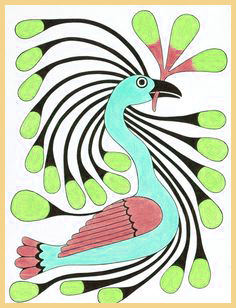History of Canadian Inuit Art

The North has been Canada's last frontier. Until the
Second World War - it had remained largely ignored by the rest of Canada,
except for the very bold and adventurous. Since the mid-1700s a succession of
explorers looking for the Northwest Passage, of whalers looking for oil,
Hudson's Bay traders looking for fox pelts as well as missionaries looking for
souls ventured into the North and met its inhabitants, the Inuit. Although
these visitors to the North introduced some new trade goods, especially rifles
and tea, tobacco and flour, the nomadic lifestyle of the Inuit hunters remained
fairly untouched by the intruders. In the late 1940s, most Inuit still lived in
small family camps, used dogsleds for travel, lived in igloos during the
winter, and divided their time between trapping white fox and hunting. All this
was to change dramatically over the next two decades. For a variety of
political and strategic reasons, the federal government of Canada started to
take an active interest in the welfare of its northern citizens. In 1939 a
ruling of the Supreme Court had accorded Inuit the same rights to health,
welfare, and education of Canadian Indians. In 1947 family allowance cheques
began to be issued, administered by the Hudson's Bay Company or the RCMP, and
followed by old-age pensions in 1948. During the 1950s annual visits by a
government ship administered medical surveys and tests for tuberculosis. In
1956 a program of low-cost housing was introduced. In 1955 a selection of
children was sent to Chesterfield Inlet to be taught by the Grey Nuns until, in
1959, federal way schools were built across the North. By 1970 the process of
giving up a nomadic lifestyle and moving into permanent settlements was completed.
One of the reasons the Canadian government felt compelled to intervene was the
receipt of reports from visitors to the North about the deteriorating
conditions among the Inuit, partially caused by the fact that the price for
white fox had plummeted on the world market. Consequently, the main means of
procuring cash had dried up for Inuit trappers. Although as hunters they lived
largely off the land, they had become dependent on cash to buy their rifles and
ammunition. With nothing to trade, families experienced severe deprivation and
periods of starvation.

Against this background of rapid cultural change,
contemporary Inuit art came into being. Soon sculptures replaced the white fox
pelts as a way to procure cash. The transition from one object of barter to
another was fairly smooth. For two hundred years Inuit hunters had, whenever
possible, bartered little souvenir items with any of the groups finding their
way into the North. However, this production and trade of carvings, usually
made out of ivory, was sporadic at best and only tool: place locally. When
James Houston, a young adventurous artist from Toronto, landed in Inukjuak in
Arctic Quebec in 1948 he was presented with one of these whittlings and, with
the eye of the artist, recognized its beauty. He solicited more and brought
back a whole selection that he presented to the Canadian Guild of Crafts in
Montreal and so the adventure began. The Guild, the Hudson's Bay Company, and
the federal government established a distribution system and a market in the
South was created. Tile stage or the enthusiastic reception of contemporary
Inuit art was set. If we want to appreciate Inuit art from this period, we need
to be conscious of its context. Here was a group of people displaced and
dispossessed, out of their element, trapped in a small community with other
Inuit groups with whom they had never before had occasion or desire to
associate. They had lost control over their lives. The powerful trio of the
RCMP, the church, and the Hudson's Bay Company made all the vital decisions for
them. Next in line was the Northern Services Officer from the Department of
Indian Affairs and Northern Development, who represented the awesome power of
the federal government. Was it any wonder that people grabbed with such fervor
the opportunity to make a living through carving? This was their way out of
humiliating dependence, all the harder to bear since they had enjoyed total
freedom and independence before. Life as hunters and keepers of the camp had
not prepared them for settlement life, which required different skills, such as
a working knowledge of English. Making art provided a solution. All the superb
skills, honed over centuries in the struggle for survival knowledge of Arctic
animals, an astonishing visual memory, infinite patience, and perseverance
could be applied to making a sculpture. Also, the law of survival had taught
the people to be creative in an environment that required knowing how to repair
a rifle or fabricate little spare parts if necessary because the next hardware
store was thousands of miles away. Making art also helped to survive
emotionally. Creating artworks depicting the nomadic lifestyle was a way of
preserving it in their minds as they had to become acclimatized to a new and
alien culture. It was also a way of regaining control over their lives. Every
artist became an entrepreneur, quarrying his own stone, fashioning his own tools.
The artists had no romantic notions about art it was a way to survive, and they
accepted the new vocation unquestioningly. The ones less fitted for making
sculpture took other jobs whenever possible. The astonishing fact is that this
art, born out of economic necessity, has such evocative power. Its appeal lies
in its honesty and stark simplicity. Having focused minds and imaginations not
burdened with the redundant images that flood people living in an
industrialized world these were pre-television times-these self-taught artists
created images of stunning visual power and archetypal significance-reason for
celebration, indeed.
Contemporary Inuit art has made its
creators and their
culture famous throughout the world. Were it not for the tremendous outpouring
of artworks, the Inuit might possibly be just another interesting
anthropological footnote in the history of the world's cultures. Memories of
life on the land are still fresh, especially for older Inuit, and the past is
very much alive in Inuit culture. Although much of the art does dwell on the
past for inspiration, it is important to remember that Inuit society is not
"frozen in time." Given the spontaneous nature of the art, however,
perhaps we may be forgiven if we are occasionally seduced into believing that
Inuit continue to live the life that they portray, and often glorify, in their
sculptures, graphics, and
textiles. While much Inuit art is "about"
traditional culture and values, it is also very much an expression of the
experiences, values, and aesthetics of individual artists who have had to come
to grips with the profound and rapid change in the second half of the History of
Canadian Inuit Art twentieth century. Inuit art is often
"autobiographical;" even if specific events are not always depicted,
and it reflects the life histories of its makers as well as their artistic talents.
By combining cultural and biographical elements with an appreciation of the
communicative power and beauty of individual works, we may begin to truly
understand and appreciate the complexity and the miracle of Inuit art.


























